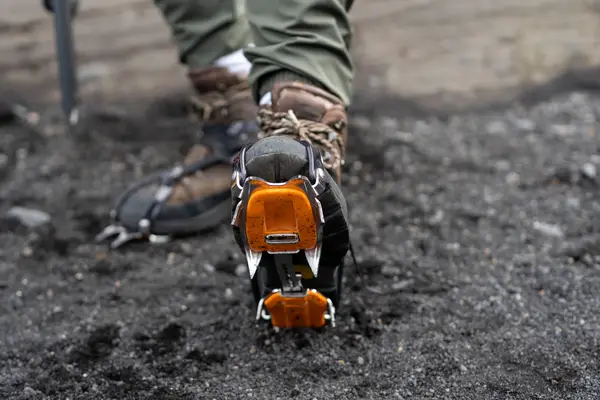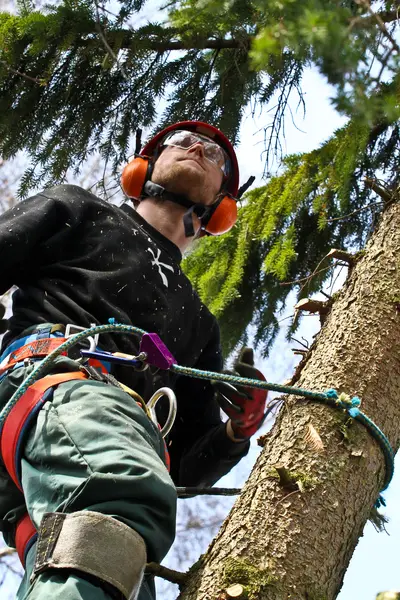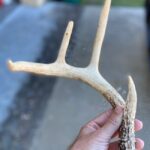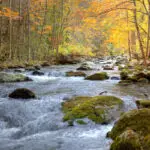Climbing spikes have gained a lot of interest among saddle hunters in recent years. They offer a fast, lightweight solution for climbing trees, but they aren’t free of flaws.
For instance, climbing spikes can be fairly dangerous, especially for new users. Regardless of their difficulties, can you use climbing spikes on public land?
Generally, if you want to use climbing spikes on public land, you might be risking a fine.
Table of Contents
- Are Climbing Spikes Allowed on Public Land?
- Why You Can’t Use Climbing Spikes on Public Land
- Alternatives to Climbing Spikes
- Closing Thoughts
Are Climbing Spikes Allowed on Public Land?
Climbing spikes are usually prohibited on public land. Some state-level land managers might allow climbing spikes, however most that we came across prohibit them along with things like screw-in steps for tree stands.

If you don’t know if climbing spurs are allowed on the land you plan to hunt on, contact the land manager to learn about your local restrictions before you head out, or before purchasing your spurs.
The actual legislation around the use of climbing spurs on public land can get a little fuzzy. Let’s take a closer look at where, how, and why climbing spikes might be prohibited.
Federal Land
It is made pretty clear that climbing spikes are not allowed on land managed by the NPS, USFS, and USFWS. Use of any tools or materials that damage trees are expressly prohibited.
We were unable to find any specific legislation regulating climbing spikes, screw-in steps, or similar on BLM land.
However, the BLM website requests visitors follow leave-no-trace best practices, which would mean climbing spurs are best left at home.
State Land
Each state has different regulations on the tools they allow for hunting and climbing trees. Most states do not explicitly mention the use of climbing spikes in their rules and regulations.
However, they do often include language that prohibits tools that damage trees and other vegetation. One would assume this includes climbing spikes.
Some states do explicitly prohibit the use of other tree-climbing tools, like screw-in or spiked steps. Again, one can assume that this logic extends to climbing spikes as they cause a similar amount or more damage to trees.
If you want to use climbing spikes on public land, do some research into the specific restrictions in place in your state, and/or contact your local land manager.
Why You Can’t Use Climbing Spikes on Public Land
At this point, you may have noticed that the main reason climbing spikes are prohibited is that they can damage the tree you are climbing.
The issue with climbing spikes is that for them to be safe, you have to drive them pretty deep into the tree.
This means you will be piercing through the bark and into the cambium layer–the green layer where growth occurs.
When you damage the cambium, you introduce an access point for insects and diseases which can kill the tree.
Climbing spikes are particularly harmful because repetitive kicks and multiple climbs can cause a lot of damage. Many other climbing tools have much less impact on the tree or limit the harm to the outer bark, which the tree can recover from.
You may also like: Can Public Land Be Closed?
Alternatives to Climbing Spikes

There are many alternatives to climbing spikes for saddle hunters looking for a fast, light, convenient way to get up a tree.
Some popular options that stick with the fast and light mentality include using:
- Climbing sticks
- Sling or rock climbing aiders
- Single or double rope technique, borrowed largely from the arborist community
All of these options are safe, convenient, fast, and light. It is important to make sure you have a solid understanding of how to safely use any tree climbing technique and always use a tether to anchor yourself to the tree.
Of course, there are other options for getting up a tree that is less lightweight or less compatible with saddle hunting.
Options like stick ladders, climbing tree stands, and portable tree stands can make it easy to get up into the tree but will be more cumbersome to install.
Related: Is It Legal To Put Trail Cameras On Public Land? A State-by-State Guide
What You Should Know About Tree Stands on Public Land
It is important to note that if you want to bring a tree stand or leave climbing sticks on public land, there are some things to be aware of.
Most land managers allow tree stands to be used but have restrictions on the types of steps you can use and how long they can stay.
Like with climbing spikes, any steps that damage the tree (like screw-in steps) are usually prohibited.
As well, each area puts a time limit on how long you can leave your tree stand in one place.
Check with your local land manager to find out their specific regulations, but commonly treestands need to be moved within 72 hours.
Finally, of course, any property that you leave on public land is accessible to the public. This comes with the risk of theft, but more likely it means other people will probably use your tree stand.
There is nothing you can do to prevent people from using your tree stand, but since it is your property, you have the right to remove it at any time.
Closing Thoughts
Most land managers prohibit the use of anything that will damage trees or other vegetation. This means that you probably cannot use climbing spikes on public land.
Even in areas where there are no restrictions on the use of climbing spikes, it is still important to consider the impact of your presence on the ecosystem.
Is the damage to the tree worth being able to climb it? Ultimately the answer to that question will vary from case to case and is up to you to decide.






